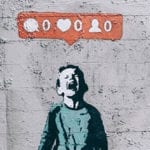 Food
Food  Food
Food  History
History 10 Odd Things Colonial Americans Kept at Home
 Weird Stuff
Weird Stuff 10 Superstitious Beliefs That Once Consumed Entire Cultures
 History
History 10 Bizarre Friendly Fire Incidents in Military History
 Technology
Technology 10 Modern Technologies That Accidentally Imitate Ancient Magic
 Mysteries
Mysteries 10 Mysteries of the Human Genome
 Weird Stuff
Weird Stuff 10 Things So Rare They’ve Only Been Found Once
 History
History 10 Legends Whose Last Moments Undid Their Glory
 Health
Health 10 Futuristic Ideas to Treat Common Medical Problems
 Weird Stuff
Weird Stuff Ten Surreal Attempts to Reverse Baldness
 Food
Food 10 Everyday Foods You Didn’t Know Were Invented by the U.S. Military
 History
History 10 Odd Things Colonial Americans Kept at Home
 Weird Stuff
Weird Stuff 10 Superstitious Beliefs That Once Consumed Entire Cultures
Who's Behind Listverse?

Jamie Frater
Head Editor
Jamie founded Listverse due to an insatiable desire to share fascinating, obscure, and bizarre facts. He has been a guest speaker on numerous national radio and television stations and is a five time published author.
More About Us History
History 10 Bizarre Friendly Fire Incidents in Military History
 Technology
Technology 10 Modern Technologies That Accidentally Imitate Ancient Magic
 Mysteries
Mysteries 10 Mysteries of the Human Genome
 Weird Stuff
Weird Stuff 10 Things So Rare They’ve Only Been Found Once
 History
History 10 Legends Whose Last Moments Undid Their Glory
 Health
Health 10 Futuristic Ideas to Treat Common Medical Problems
 Weird Stuff
Weird Stuff Ten Surreal Attempts to Reverse Baldness
Top 10 Design Tricks Businesses Use To Make You Spend Money
Businesses make their money when you buy goods or services from them. So it shouldn’t come as a surprise that they put a lot of effort and thought into making sure that you actually buy whatever it is that they are selling, and many companies have quite a few tricks up their sleeves to accomplish this.
These tricks involve lots of psychology and science. If anything, it’s not a stretch to say that businesses are hacking our brains and behaviors to make more money. And these tactics are often so subtle that we don’t even realize what’s being done—even when the evidence is in plain sight.
10 Casinos
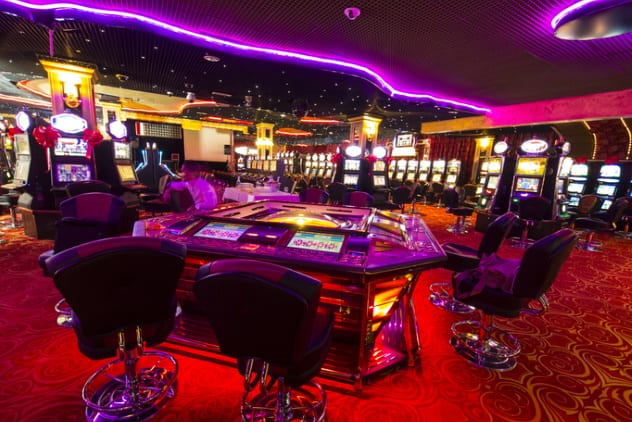
Casinos use a mix of psychology and science to make you keep gambling. This means they pay close attention to everything they have within their premises—from the arrangement of their tables to the lights they use and even the designs of their carpets.
Casinos try not to incorporate too many 90-degree turns in their interiors. You see, right-angle turns tend to make people more heavily utilize the parts of their brain responsible for decision-making, which casinos do not want. So they have their walkways subtly curve toward where they want you to go.
Slot machines are also programmed to ensure that the casinos always win in the end. This shouldn’t even be a surprise, considering that these days, casinos depend on slot machines for up to 85 percent of their income.
Of course, casinos allow players to win the jackpot occasionally, just to keep them playing. Players can also win back part of their money. Say they win $25 when they played with $50. That is really a $25 loss, but the players will often consider it a win.
Slot machines are also designed to make the player relaxed. The chairs are very comfortable, and some machines are even covered to allow the utmost privacy for the player. There are also ATMs to ensure that players never run out of money.
However, slot machines can quickly become frustrating when a player racks up a continuous losing streak. The casinos have that covered, too. They just offer the player a “free” breakfast for the loss. Casino operators even have plans to program machines to automatically allow losers to win some money if they’ve lost for a long streak, just to keep them from giving up.[1]
9 Gyms
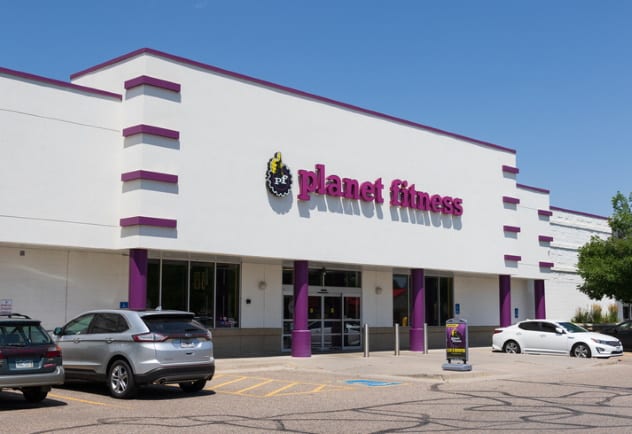
Americans spend a lot on gym memberships, more than what they spend to attend college. A news report published in January 2018 indicated that Americans, on average, spend $155 a month on fitness. In this case, “fitness” includes healthy foods, supplements, gym clothes, and the gym membership itself. At this rate, the average American will spend $112,000 on fitness during their lifetime. For comparison, the average American college education costs a total of $98,440. Yet the US still has an obesity problem.
Quite a few people who pay for a gym membership will never visit the gym. That should be bad for the gyms, right? Wrong! In fact, they love it that way. You see, gyms have higher running costs when you actually exercise. Their equipment also wears out faster and requires replacement sooner.
Interestingly, most gyms also hope you never become fit because your desire to improve is what makes you keep paying for membership. It’s little wonder most gyms are oversubscribed. For instance, Planet Fitness has an average of 7,250 members at each gym, even though they cannot cannot contain more than 300 people at one time.
These days, they even employ several tricks to discourage you from coming over. When you do, they have other tricks to stop you from working out hard enough. Planet Fitness has sirens that go off when you work out “too hard” (the so-called “Lunk Alarm”), which is weird, considering that is why you are in the gym in the first place. Ostensibly, this is because Planet Fitness is marketed as a “judgement-free zone,” meant for novices and not screaming bodybuilders. Incidentally, novices are less likely to stick with a workout program, but Planet Fitness’s low monthly membership rates of $10–$20 don’t really feel like a big waste to those who don’t actually hit the gym that much.
Planet Fitness also places their free weights in remote corners, designed to mimic relaxation areas and not a gym. They don’t leave you alone when you manage to become fit, either. They regularly organize parties where they share less-than-healthy foods like pizza, bagels, and Tootsie Rolls, just so you’ll regain that fat you lost and maintain your membership.[2]
8 Restaurants

Have you ever felt overwhelmed after reading a restaurant’s menu? Congratulations, you’re another victim of one of the naming psychology hacks used by restaurants.
One trick involves the use of elaborate phrasing like “tender, juicy, and drenched in a delicious, tangy sauce” to describe a regular chicken meal, or “sweet and creamy” for their ice cream. They could also describe their dishes in weird, unnecessary ways, like calling a beet “beet root.” “Beet root” makes no sense because a beet is a root. It’s like calling beef “beef meat.”
Restaurants could also add some foreign words to play with your head. This is evident in menu items like Italian “shrimp scampi tagliatelle,” which actually means “noodles with shrimp doused in butter” in English.
Some restaurants also coerce you into buying items by invoking your grandma, even though she had nothing to do with “Grandma’s fresh homemade chocolate cookies.” If these tricks weren’t enough, restaurants will also use tiny and unconventional fonts to make their menus difficult to read.
On the money side of things, many restaurants avoid using dollar signs in their prices because they do not want to remind you that those figures denote the money you have to pay. They also prefer keeping prices in fractions like 9.85 instead of 10, 9.99, or even 9.95.
Restaurants also smartly arrange their menus so that expensive items will seem cheap. For example, a $20 item looks expensive when you compare it to a $10 item. However, that $20 item starts to seem cheap when a third food item costing $30 is added and gets much cheaper when a fourth $50 item is added.[3]
7 Social Media
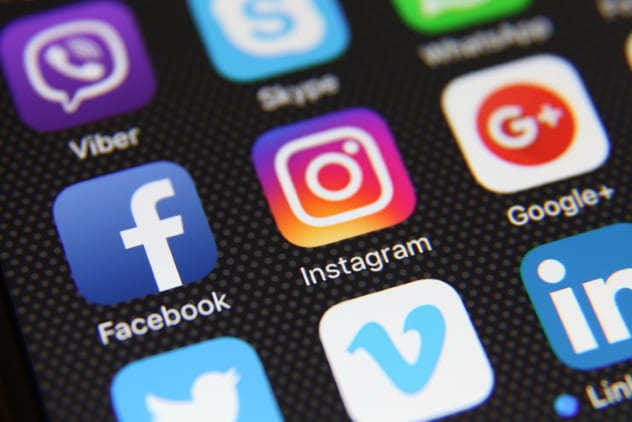
Social media sites, especially Facebook and Instagram, have been receiving some negative press of late. They are addictive and have been blamed for a myriad of terrible health problems. Why is this so?
Here’s the truth: Facebook and Instagram are addictive because they were deliberately designed to be. In fact, Facebook employs thousands of computer scientists and engineers to develop new ways of making their products addicting.
One is the creation of the “like” button. Another is the infamous infinite scroll. The infinite scroll means you do not need to click a “next” or numbered button to visit the next page, as you will often do with other websites. Instead, more content automatically loads as you get closer to the bottom, and it goes on and on. You never reach the end of the page and just keep scrolling down.
At this point, you might be thinking “Why does Facebook do this? It’s free to use, right?” Well, you don’t need to pay Facebook a dime because advertisers are doing that already. You’re only required to be online for as long as possible to view those ads.[4]
6 Supermarkets

Supermarkets have lot of tricks to get you to spend more money. The whole thing starts right from the entrances, which are often filled with colorful flowers and fresh farm produce. The soothing view relaxes your mood, which makes you more willing to part with some bucks.
Your noses aren’t spared, either. They’re often treated to the smell of freshly roasted chicken or baked bread. Your ears are also treated to some slow music that makes you relaxed. Relaxed people walk more slowly and spend more time staring at items. The longer you stare, the more likely you are to buy items you did not include in your budget.
Supermarkets also arrange their goods on shelves using what is called a planogram. This is basically a method of arranging items on the shelves in order to maximize sales.
Items kept at eye level or directly below it are often the most expensive. They are also the ones you see first. The cheaper and more useful items are kept higher up or lower down on the shelves. Items placed at the beginning of the aisle are also often cheaper than those in the middle.[5]
5 Apple Stores
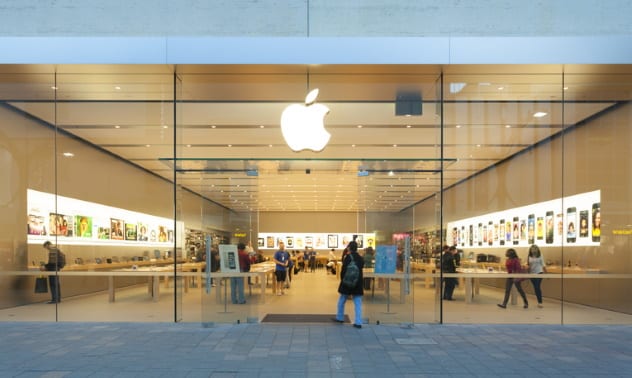
Apple designs it stores so that you can start to test its products the moment you walk through the door. The merchandise is neatly arranged in appealing, ready-to-touch positions. Macbooks are even raised a bit so that you can see the keyboard and screen at the same time.
Every item is connected to the Internet, which you can use free of charge. You can also use the gadgets for as long as you want without the store clerks ever interfering. Apple does this because it believes people are more likely to buy an item the longer they interact with it.
Apple also ensures that you have a seamless shopping experience by providing lots of free space, with no distracting banners or advertisements. It also keeps the wiring and cables out of view.[6]
4 Amazon

Amazon might not have many brick-and-mortar stores, but it does know how to get some extra bucks off your credit cards. One is with its “1-click ordering,” which it actually has a patent on. While 1-click ordering makes shopping seamless, it also makes you buy without thinking about the price. One click, and it’s all over.
Amazon’s website and app use powerful algorithms that will always recommend products you could be interested in. That’s why you always see those “Frequently Bought Together” and “Customers Who Bought This Item Also Bought” sections. Those two phrases might seem innocuous, but they account for 35 percent of the money Amazon makes.
Another thing Amazon does well is upselling. One is with the free movies it offers you when you pay for a Prime membership. Amazon will often suggest some other films you could rent or buy when you are done watching those free movies.
Speaking of Prime, that is another major money-spinner for Amazon. Amazon obviously makes money when you pay for Prime membership, but that’s just the beginning. Having a Prime membership makes you more likely to do just about all of your shopping on Amazon, which means more money for Amazon. The average Prime member buys $1,500 worth of items a year, which is well over the $625 spent by regular shoppers.
Amazon also makes more money off non-Prime members when they buy more items in order to spend enough to be eligible for free shipping. And what about those “Prime Days” and “Lightning Deals”? They’re just more attempts to make you spend more money and end up with items you probably don’t need.[7]
3 Starbucks
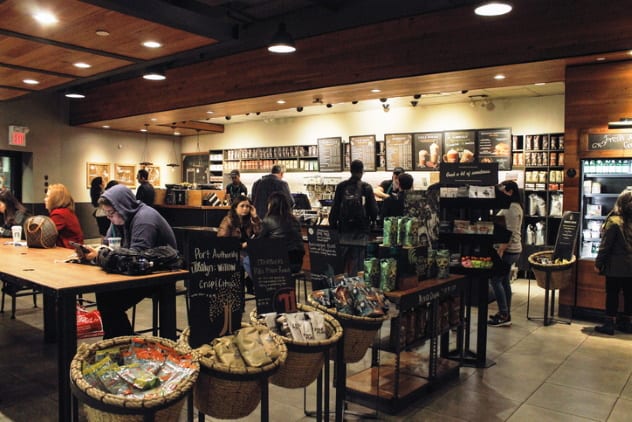
Starbucks locations have lots of tricks up their sleeves to make you buy more than what you came in for. Everything starts right from the moment you walk in through the door, which prominently features stickers and posters containing several items on their menus. The posters are directly at your eye level, so you will see them. If you manage not to look at those, they have more around the handle, which you are very likely to see.
Starbucks locations are designed so that you walk past the seating area to reach the ordering counter at the back or, if you’re lucky, the middle of the store. This is done to make sure you check out a seat even if you never planned to sit. You’re more likely to spend more money when you remain inside the store.
The ordering counter is also designed with bright lights and little space between the store clerk and the customer, just so things feel a bit more personal. The space between the ordering and pickup counters is also filled with lots of ads to make you spend more money.[8]
2 McDonald’s
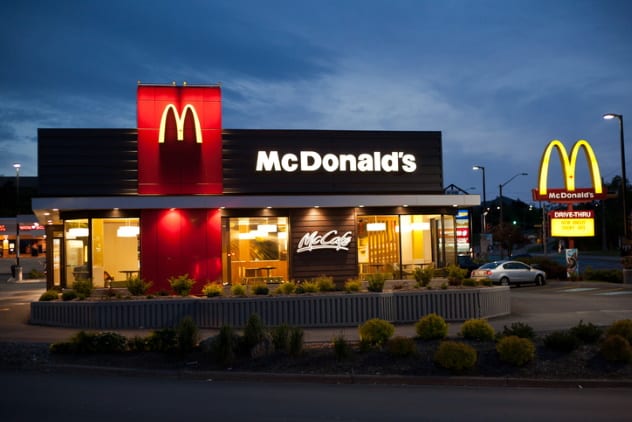
McDonald’s employs several in-house tricks to try to separate you from your money. Like Starbucks, its doors are littered with pictures of its top selling products—without the prices. Other posters inside the store also lack prices because McDonald’s wants you to think about the food instead of the money.
The digital menus at the counters are also programmed to make you spend. McDonald’s often adds animations that direct your attention to new, more expensive items it wants you to buy.
Customers who prefer healthy meals are not spared of the fast food chain’s tricks, either. People ordering something they feel is healthy are less careful about adding some less-than-healthy side dishes. They end up loading their bodies with an amount of calories they were probably trying to avoid.[9]
1 Walmart
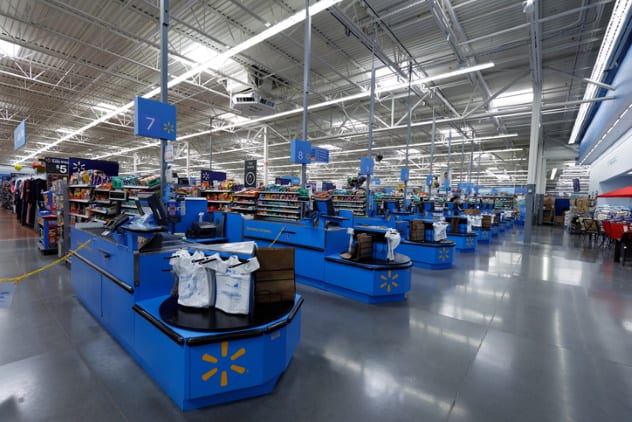
Walmart might promise you low prices, but they never promised not to make you spend more than you meant to. For starters, Walmart (and, to be fair, many other businesses) uses prices with decimals, like $4.93, because we tend to focus on the first number when we see a price. People will subconsciously consider an item worth $4.93 to be closer to $4 than $5.
Like many retailers, Walmart has big shopping carts by its doors, just to prime your mind for the piles of items you’ll be buying even if you didn’t plan to. It also plays slow music to make you relax and spend more time in the store. In addition, Walmart uses big, bold “Everyday Low Prices” signage basically everywhere, reminding you that they sell their stuff for less than competitors.
Then there are the cheap rollback items, which are cheap because they were overstocked. But you buy them anyway—even if you don’t need them—since you don’t know when they’ll revert to their regular prices. At the end of your shopping trip, you’re left with lots of cheap products you don’t need and a surprisingly hefty total on the receipt.[10]
Read about more secret corporate tricks to open your wallet on Top 10 Sneaky, Secret Tricks Companies Use To Make Us Spend More and 10 Things We Buy Because Advertisers Convinced Us To.







